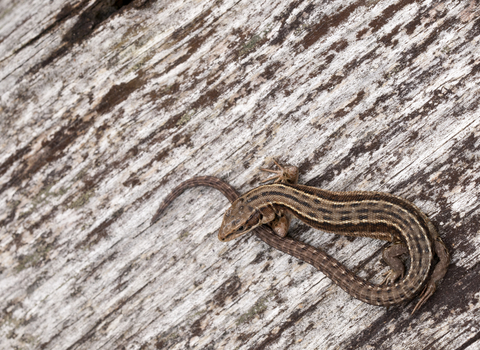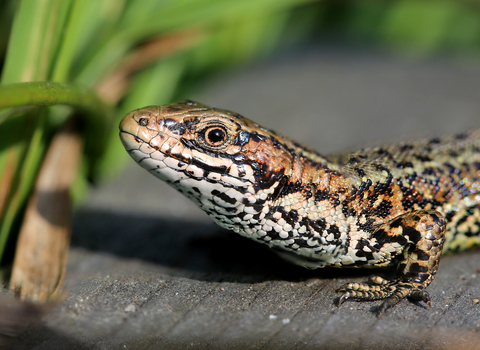
© Ross Hoddinott/2020VISION

©Jon Hawkins Surrey Hills Photography
Common lizard
Look out for a common lizard basking in the warm sun as you wander around heathlands, moorlands and grasslands. You might even be lucky enough to spot one in your garden, too!
Enw gwyddonol
Zootoca viviparaPryd i'w gweld
March to OctoberTop facts
Ynghylch
Living up to its name, the common lizard is the UK's most common and widespread reptile; it is the only reptile native to Ireland. It is found across many habitats, including heathland, moorland, woodland and grassland, where it can be seen basking in sunny spots.Also known as the 'viviparous lizard', the common lizard is unusual among reptiles as it incubates its eggs inside its body and 'gives birth' to live young rather than laying eggs. Adults emerge from hibernation in spring, mating in April and May, and producing three to eleven young in July.
What to look for
The common lizard is variable in colour, but is usually brownish-grey, often with rows of darker spots or stripes down the back and sides. Males have bright yellow or orange undersides with spots, while females have paler, plain bellies.Where to find
Found throughout the country, except for most Scottish islands, the Isles of Scilly and the Channel Islands. The only reptile native to Ireland.Roeddech chi yn gwybod?
If threatened by a predator, the common lizard will shed its still-moving tail in order to distract its attacker and make a quick getaway. This leaves a scar behind, but it can regrow its tail, although it is usually shorter than the original.Gwyliwch
Common lizard (https://vimeo.com/646954834)
Tom Hibbert
